02:15
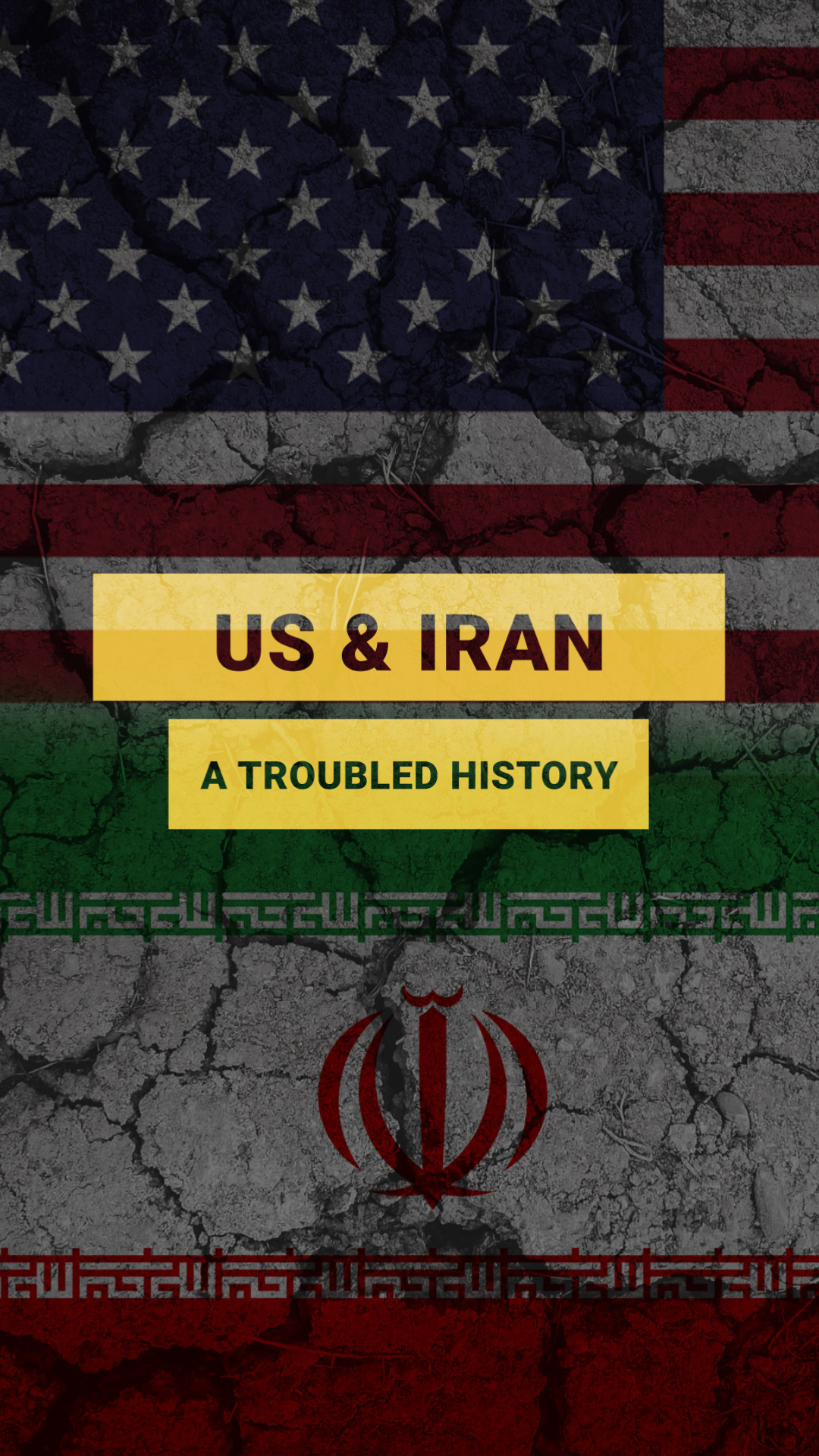
US President Donald Trump ordered the assassination of Iran's chief military commander, Major General Qassem Soleimani, the head of the Revolutionary Guard's elite Quds Force on the morning of Friday 3 January.
The event has propelled tensions between the US and the Islamic Republic to new heights and risks the escalation of a major military conflict between the two nations and their respective allies.
While relations between Washington and Tehran have dramatically deteriorated over the past two years, the two nations have been at loggerheads since the early 1950s.
Below is a chronology that maps nearly seven decades of antagonism between the US and Iran:
1953 - The CIA assists plans to topple the democratically-elected Iranian Prime Minister Mohammed Mossadegh, helping to restore the Iranian monarchy by bringing Shah Mohammed Reza Pahlavi to power.
1957 – Washington and Tehran ratify a deal on civil nuclear cooperation.
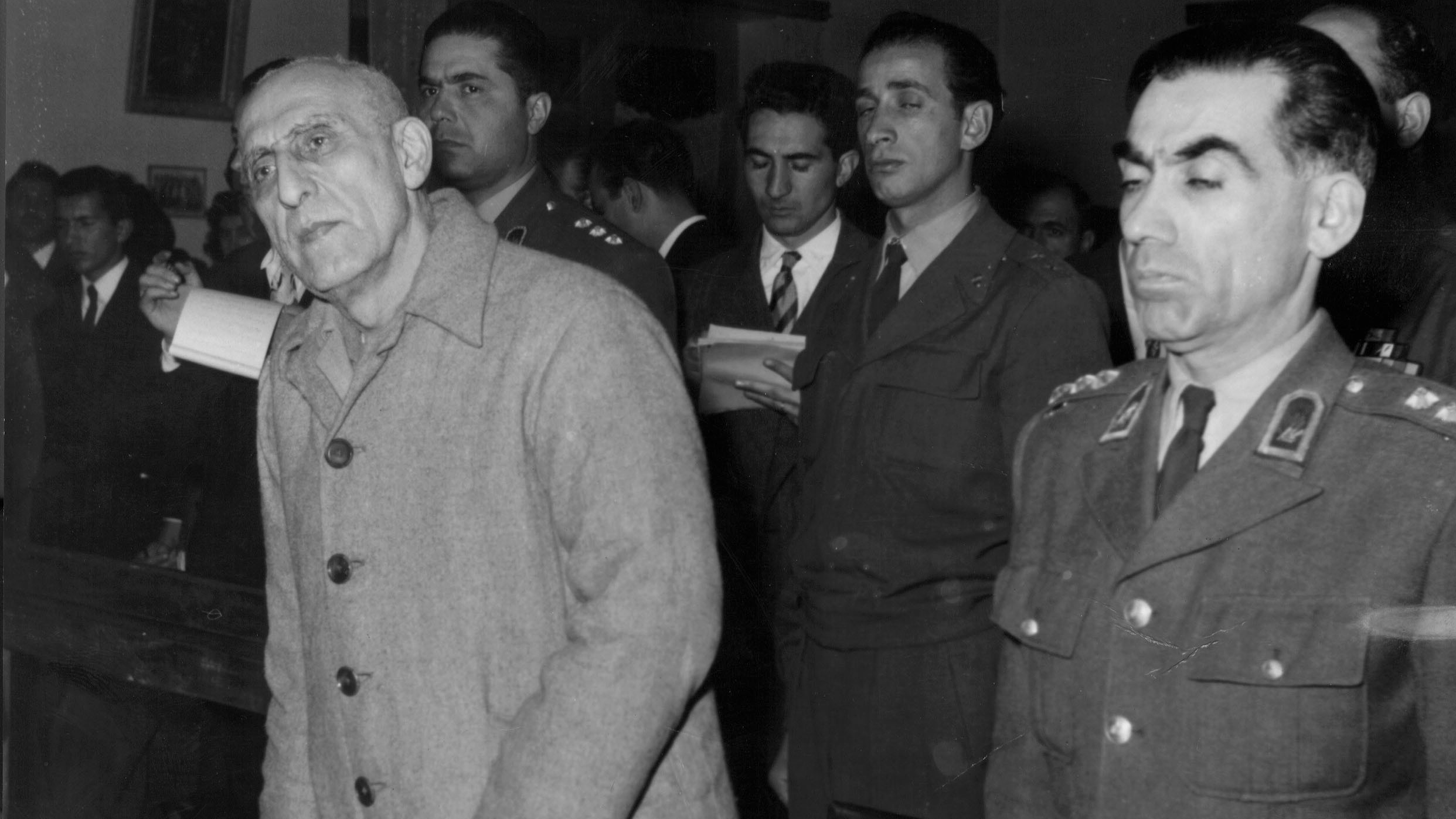
Deposed Iranian Premier Mohammed Mossadegh is sentenced to three years solitary confinement by a military court in Tehran, Iran after CIA-backed coup in 1953. (Credit: AP)
Deposed Iranian Premier Mohammed Mossadegh is sentenced to three years solitary confinement by a military court in Tehran, Iran after CIA-backed coup in 1953. (Credit: AP)
1967 - The US supplies Iran with a nuclear reactor as well as weapons-grade enriched uranium fuel.
1968 - Iran signs the Nuclear Non-Proliferation Treaty, allowing it to build a civil nuclear program on the agreement that it does not develop nuclear weapons.
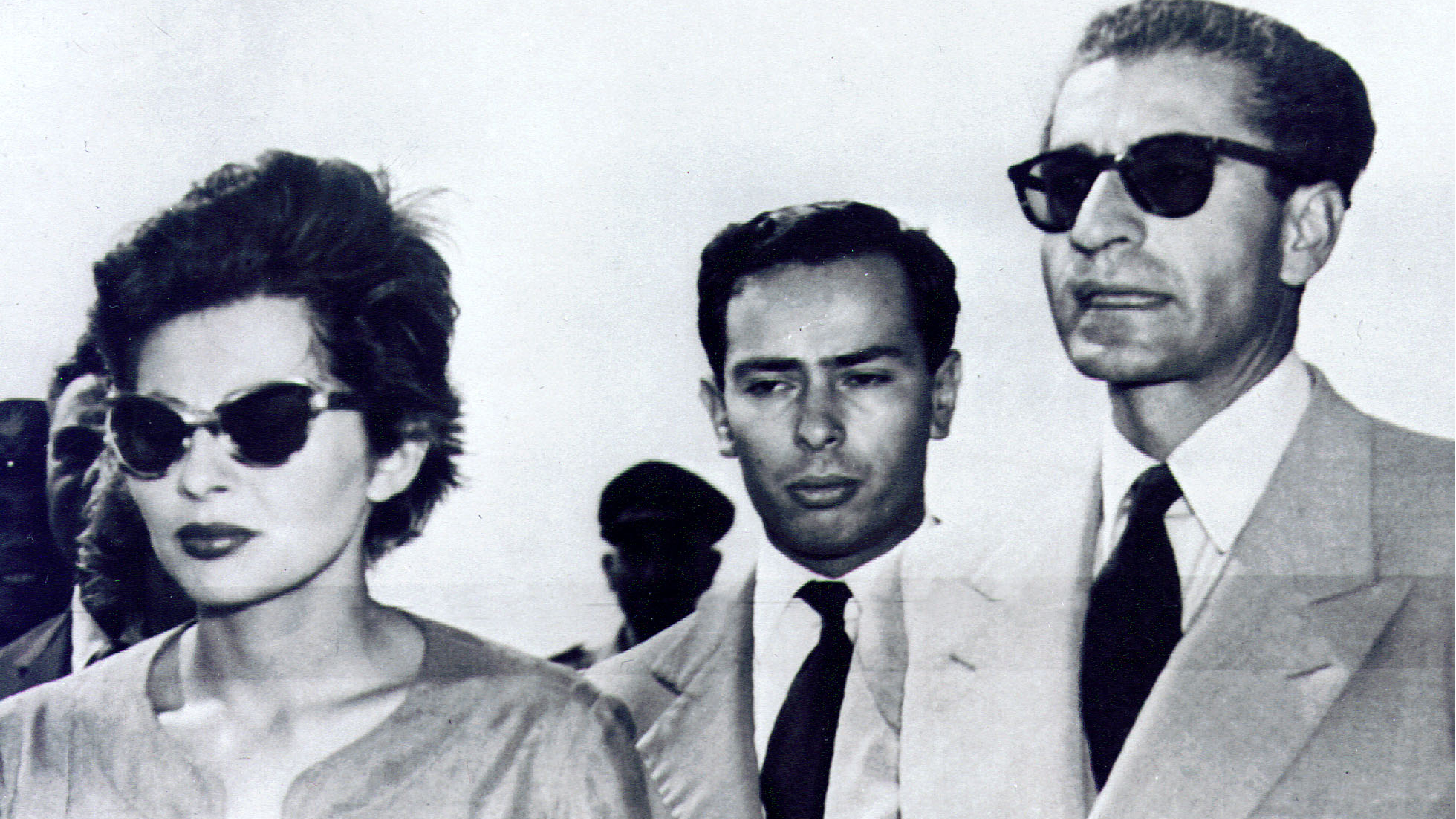
Princess Soraya Esfandiari Bakhtiari and the former Shah of Iran Mohamed Reza Pahlavi in 1953. (Credit: AP)
Princess Soraya Esfandiari Bakhtiari and the former Shah of Iran Mohamed Reza Pahlavi in 1953. (Credit: AP)
1979 – Iranians launch the Islamic Revolution, deposing the US-backed shah's regime, forcing the monarch to flee. Ayatollah Ruhollah Khomeini comes out of exile to be supreme religious guide of the newly created Islamic Republic. Students in Tehran occupy the US Embassy, taking dozens of staff hostage for what would end up being 444 days.
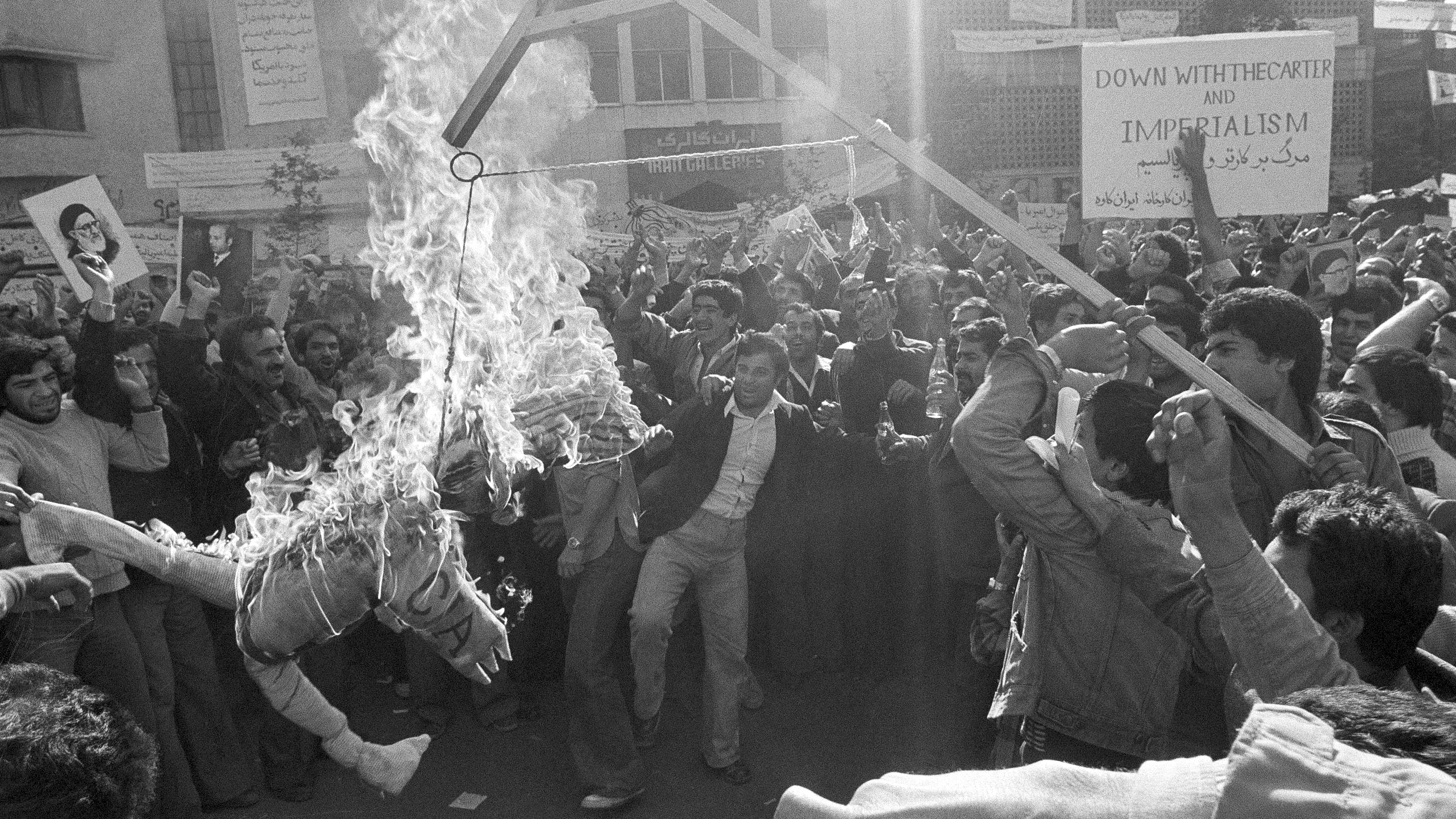
Protesters burn effigy of Uncle Sam outside US embassy in Tehran, 1979. (Credit: AP)
Protesters burn effigy of Uncle Sam outside US embassy in Tehran, 1979. (Credit: AP)

Ayatollah Ruhollah Khomeini returns from exile to become Supreme Leader of the Islamic Republic, 1979. (Credit: AP)
Ayatollah Ruhollah Khomeini returns from exile to become Supreme Leader of the Islamic Republic, 1979. (Credit: AP)
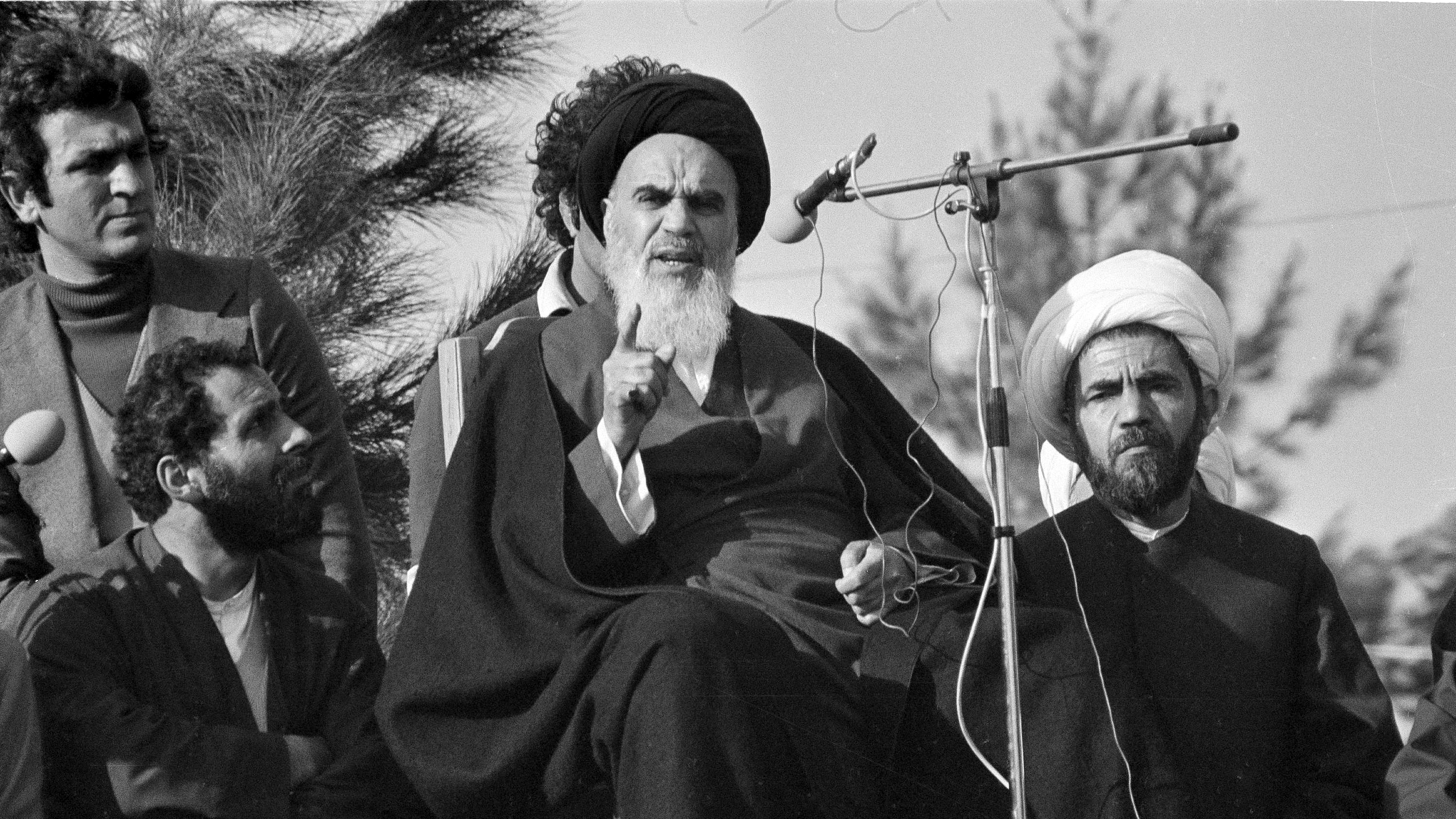
Former Supreme Leader of Iran Ruhollah Khomeini gives address after returning to Iran (Credit: AP)
Former Supreme Leader of Iran Ruhollah Khomeini gives address after returning to Iran (Credit: AP)

Revolutionaries rally outside US embassy in Tehran, 1979 (Credit: AP)
Revolutionaries rally outside US embassy in Tehran, 1979 (Credit: AP)
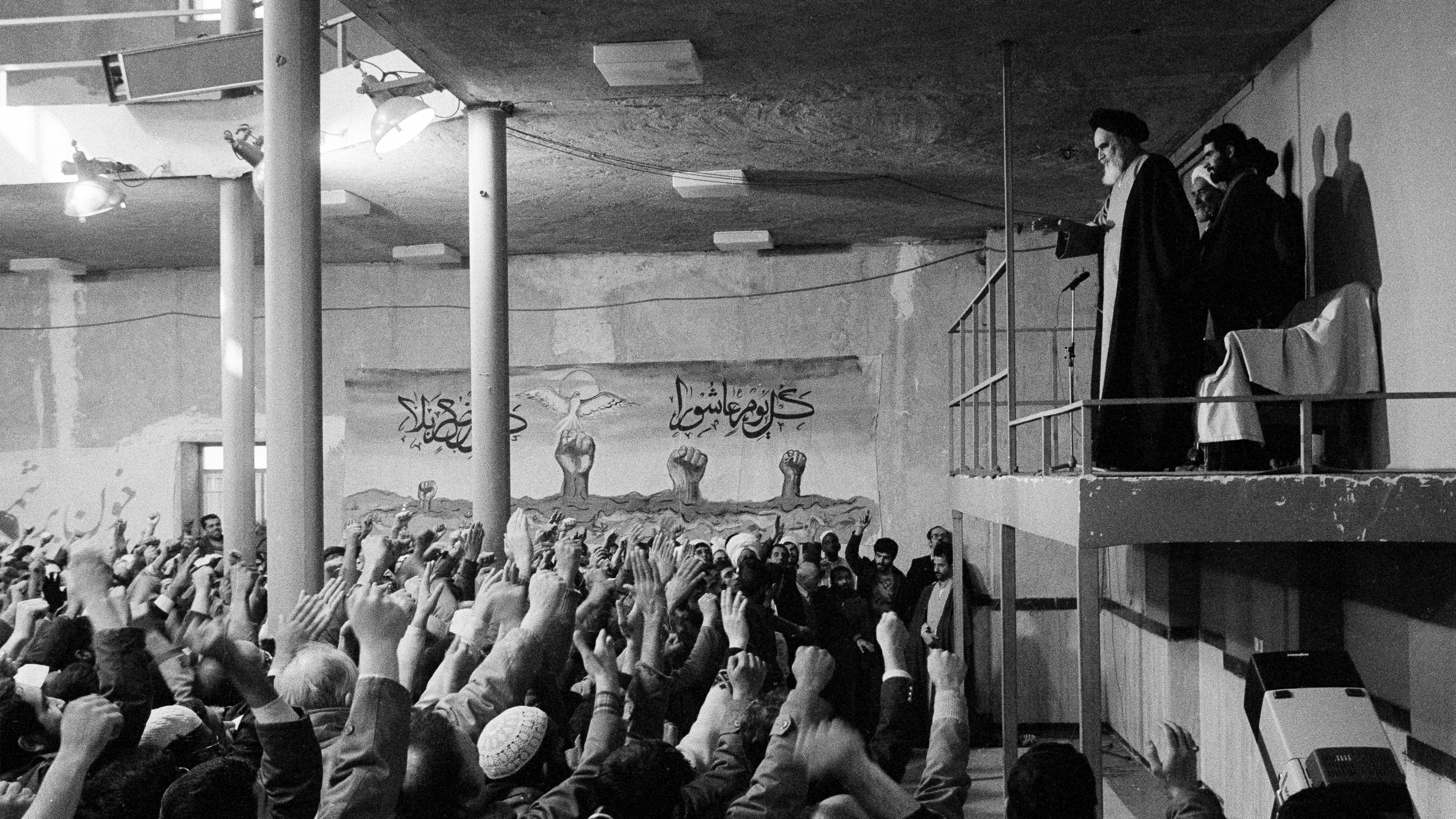
Former Supreme Leader of Iran Ruhollah Khomeini addresses crowd, 1979. (Credit: AP)
Former Supreme Leader of Iran Ruhollah Khomeini addresses crowd, 1979. (Credit: AP)
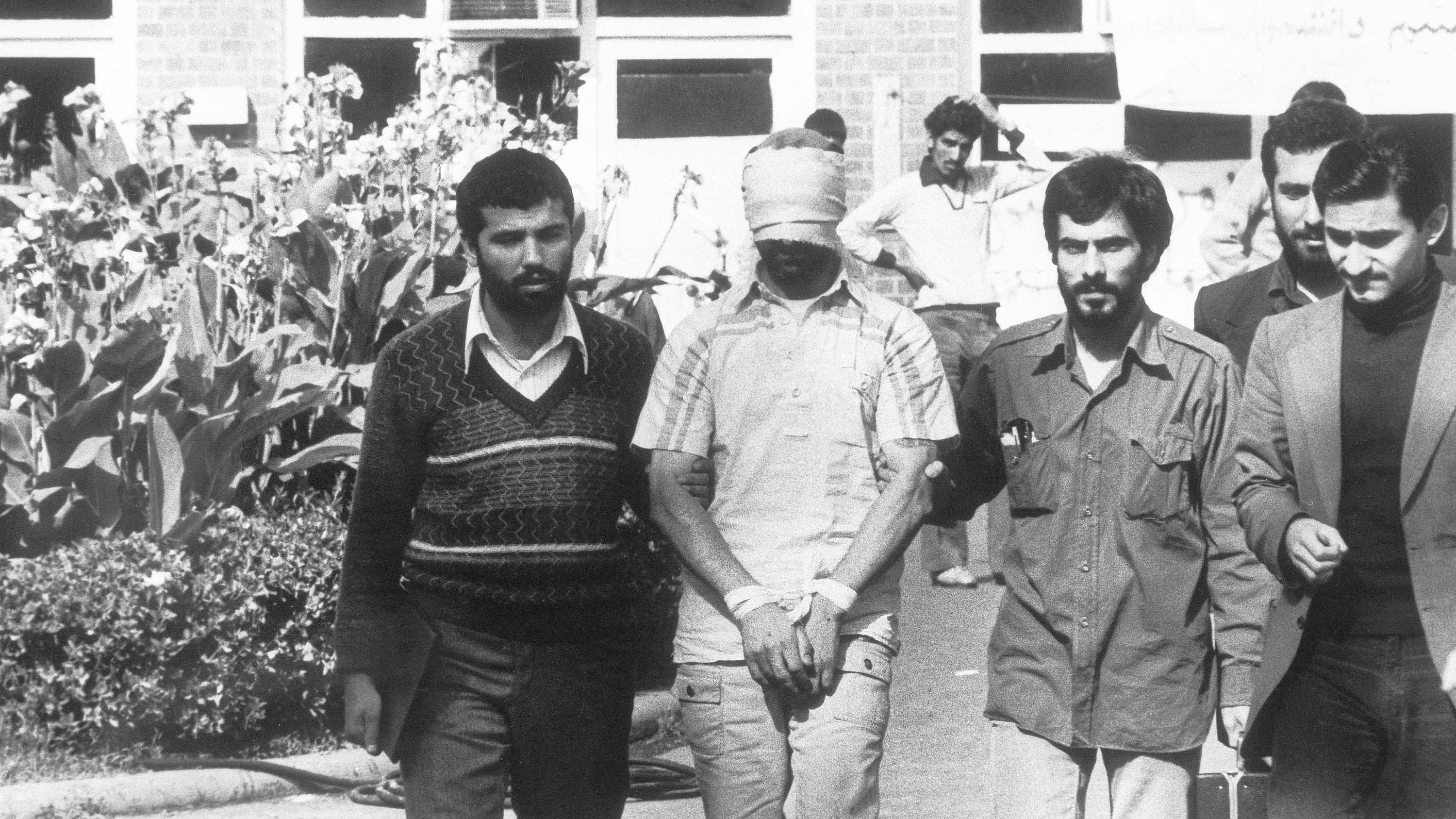
After Iranian students overran the US embassy in Tehran, Iran held 52 staff members hostage for 444 days, 1979. (Credit: AP)
After Iranian students overran the US embassy in Tehran, Iran held 52 staff members hostage for 444 days, 1979. (Credit: AP)
1980 - Washington breaks off diplomatic ties with Tehran, enforcing a far-reaching trade embargo and seizing the Republic's assets. US President Jimmy Carter's plan to rescue hostages fails.
1981 – Minutes after Carter steps down and Ronald Reagan is inaugurated as US president, Tehran releases 52 embassy hostages.
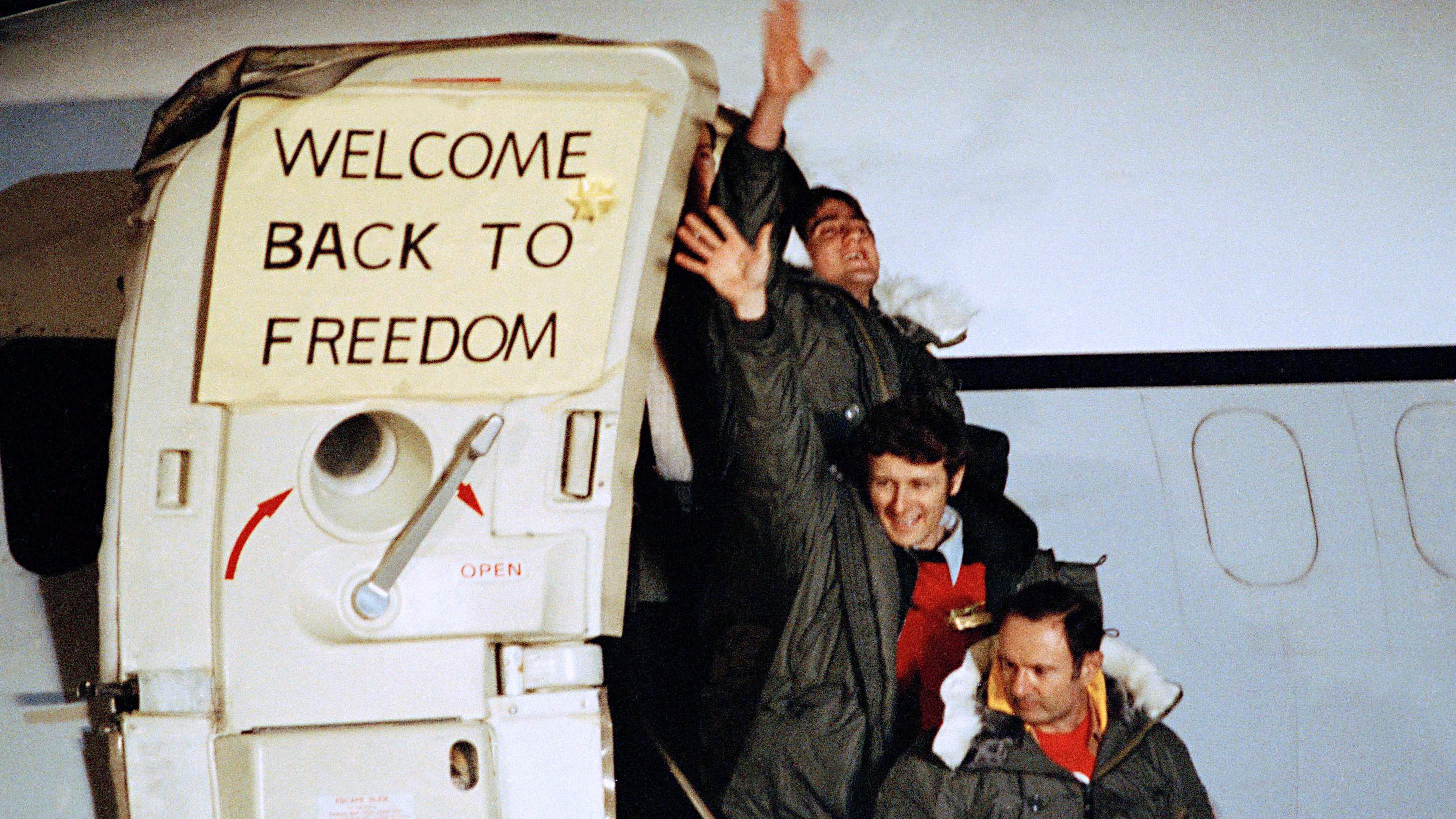
US hostages arrive at Rhein-Main US Air Force base in West Germany after their release from Iran, 1981. (Credit: AP)
US hostages arrive at Rhein-Main US Air Force base in West Germany after their release from Iran, 1981. (Credit: AP)
1984 - US puts Iran on list of state sponsors of terrorism.
1986 - Reagan publicly confirms the so-called Iran-Contra affair, a secret arms deal between Washington and Tehran - in contravention of the US embargo - aimed at allowing the US to fund right-wing Contras in Nicaragua.
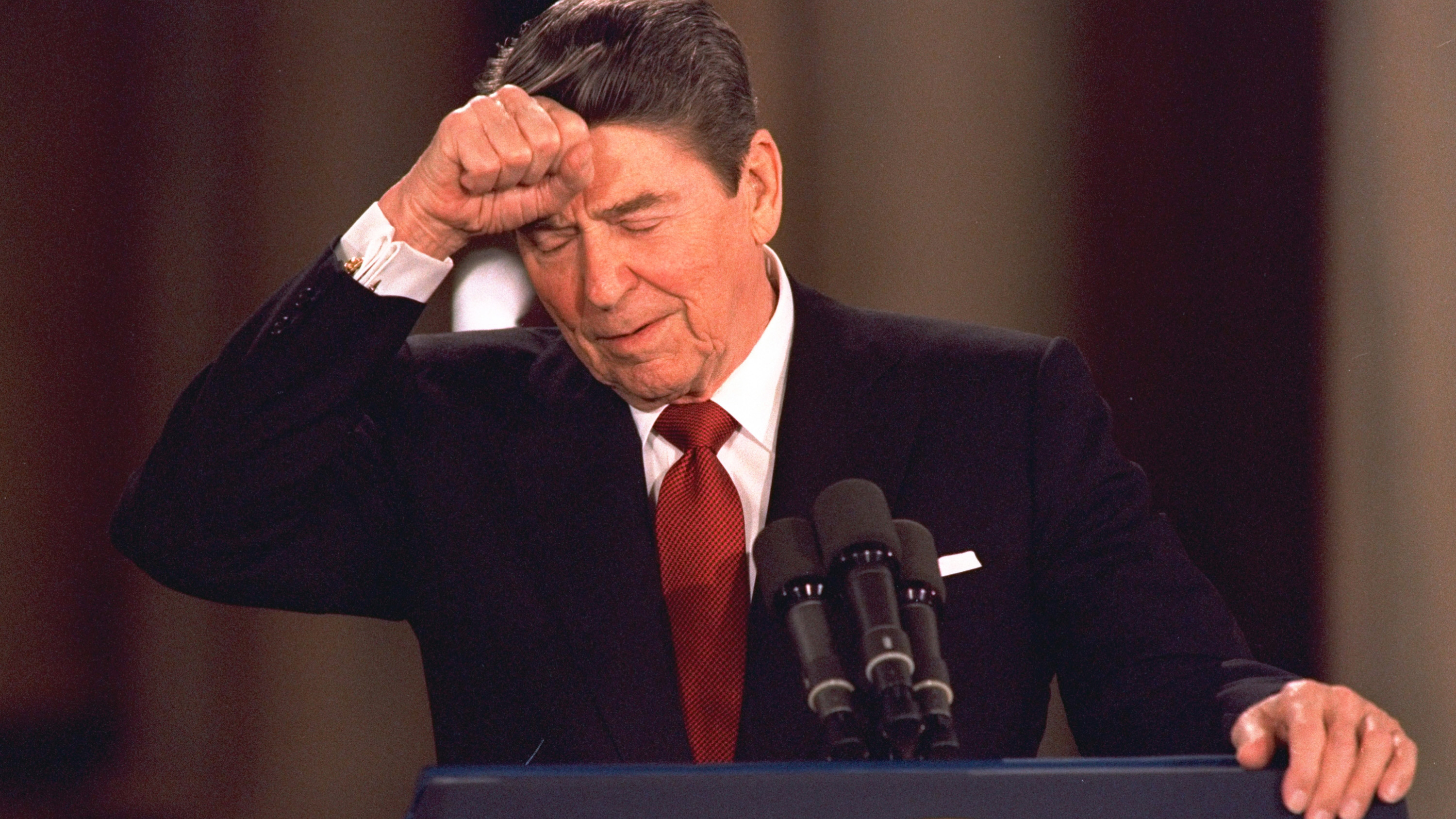
Former US President Ronald Reagan puts his fist to his forehead at the White House while responding to a question over whether he deliberately lied to the public over the Iran-Contra affair, 1987 (Credit: AP)
Former US President Ronald Reagan puts his fist to his forehead at the White House while responding to a question over whether he deliberately lied to the public over the Iran-Contra affair, 1987 (Credit: AP)
1988 - US warship Vincennes accidentally shoots down Iran Air Flight 655, killing all 290 passengers.
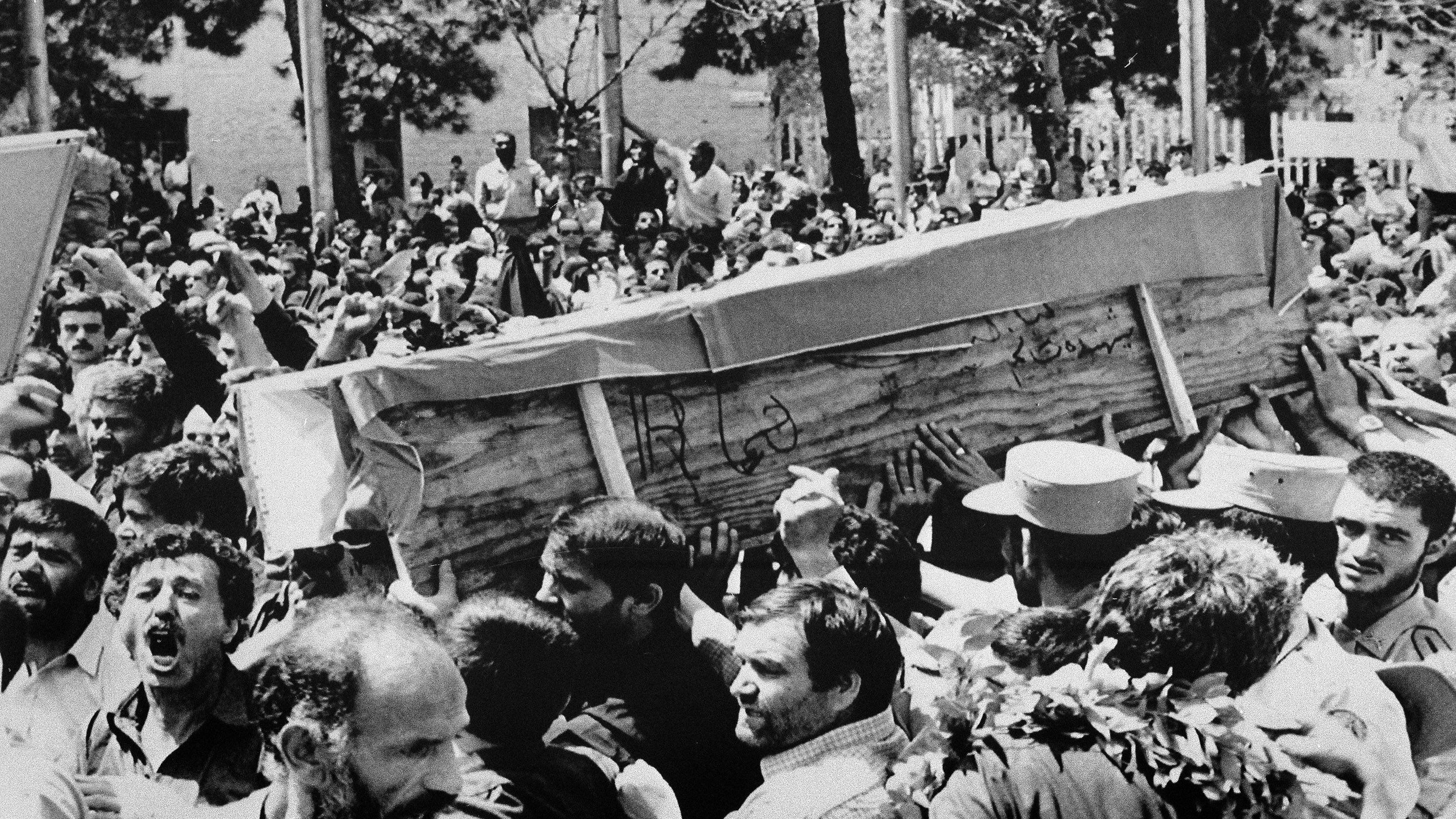
Mourners carry coffin of one of the victims of the Iran Air Flight 655 downed by US warship Vincennes, 1988 (Credit: AP)
Mourners carry coffin of one of the victims of the Iran Air Flight 655 downed by US warship Vincennes, 1988 (Credit: AP)
2002 – Five months after 9/11, US President George W. Bush describes Iran, Iraq, and North Korea as an "axis of evil," popularizing the term as part of the so-called 'War on Terror'. Washington accuses Iran of developing nuclear weapons.
2006 – US says it is willing to take part in multilateral nuclear negotiations with Iran if the Republic halts nuclear enrichment.
2008 - Bush sends first US official since his election to participate directly in nuclear talks with Iran in Switzerland.
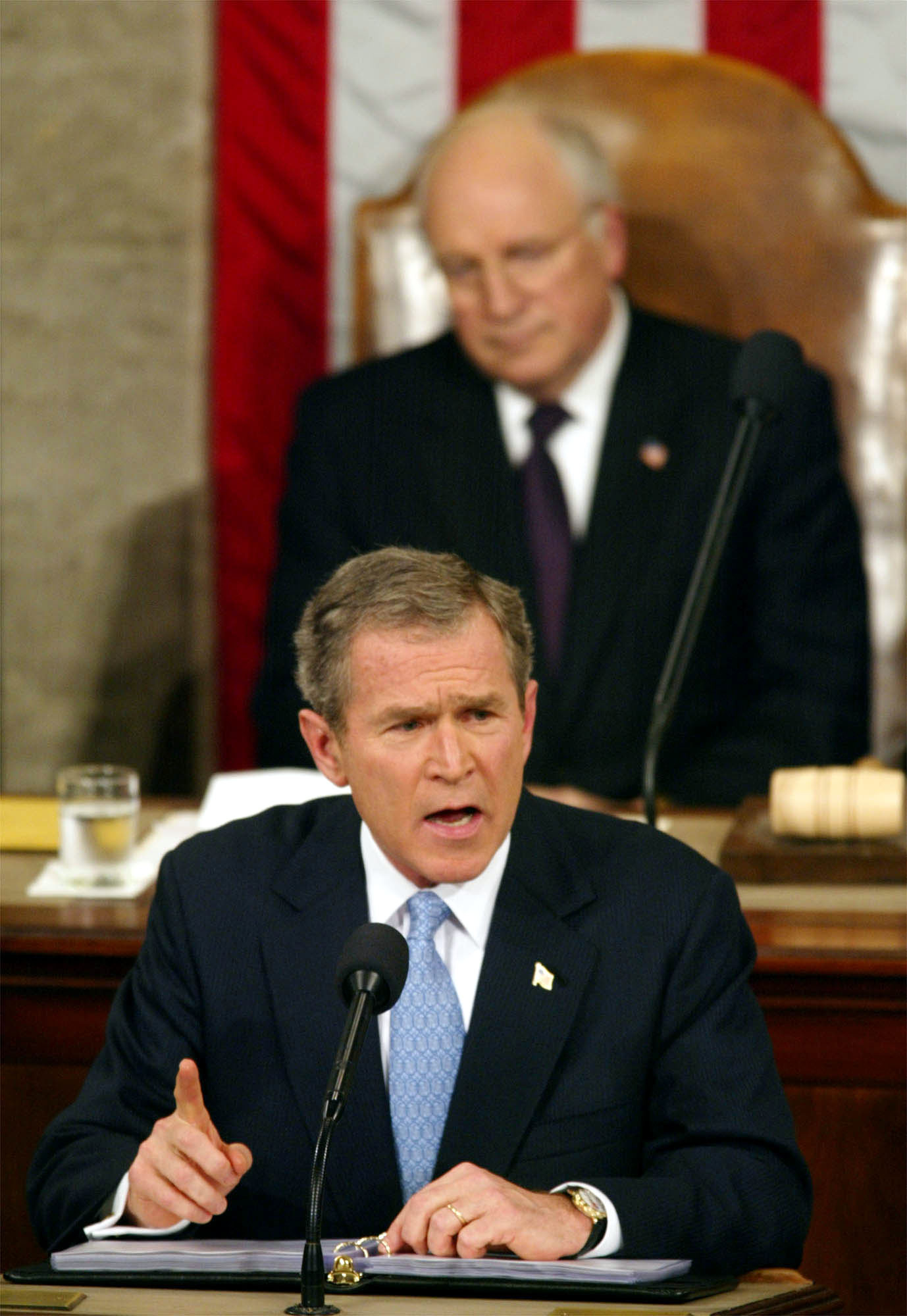
With Vice President Dick Cheney in the background, former US President George W. Bush gives State of the Union address where he bunches Iran, Iraq and North Korea together as an "axis of evil."
With Vice President Dick Cheney in the background, former US President George W. Bush gives State of the Union address where he bunches Iran, Iraq and North Korea together as an "axis of evil."
2009 – US President Barack Obama says he would extend a hand to Iran if they would "unclench their fist."
2009 – The US, Britain and France report that Tehran is developing a uranium-enrichment site at Fordow near Qom.
2012 - Obama legally allowed to sanction foreign banks if they do not reduce Iranian oil imports. Tehran's oil sales fall, provoking financial slump. Secret talks start over potential nuclear program.
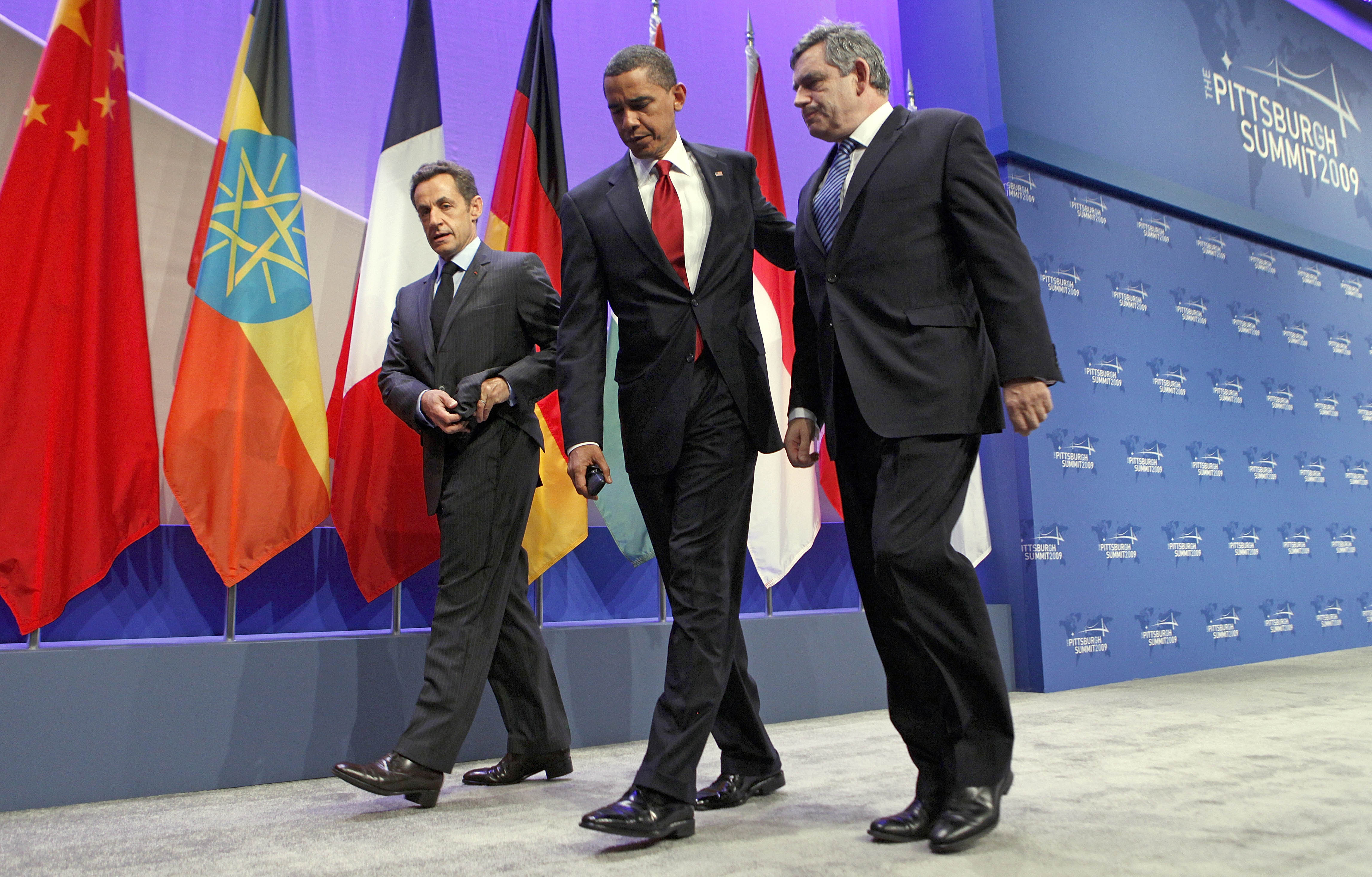
US President Barack Obama, British Prime Minister Gordon Brown, and French President Nicolas Sarkozy leave the stage after making a joint statement on Iran's nuclear facility during the G-20 Summit in Pittsburgh, 2009 (Credit: AP)
US President Barack Obama, British Prime Minister Gordon Brown, and French President Nicolas Sarkozy leave the stage after making a joint statement on Iran's nuclear facility during the G-20 Summit in Pittsburgh, 2009 (Credit: AP)
2013 – Iranian President Hassan Rouhani comes to power on a reform platform, pledging to improve global relations.
Obama and Rouhani speak on the phone, the highest-level contact between the US and Iran in thirty years.
In November, the US and five international powers agree to sign the Joint Plan of Action (JCPOA) nuclear deal, with Iran agreeing to cut back its nuclear program for sanctions relief.
2016 - The US and Iran conduct prisoner swap, including the release of 10 US sailors who were found in Iranian territorial waters.

Iranian President Hassan Rouhani at the Hilton Hotel in New York ahead of addressing a discussion organized by the Asia Society and the Council on Foreign Relations, 2013. In the same year US and Iranian officials held high-level secret talks on the Iran Nuclear deal. (Credit: AP)
Iranian President Hassan Rouhani at the Hilton Hotel in New York ahead of addressing a discussion organized by the Asia Society and the Council on Foreign Relations, 2013. In the same year US and Iranian officials held high-level secret talks on the Iran Nuclear deal. (Credit: AP)
2018 - US President Donald Trump pulls out of JCPOA nuclear deal in May, reintroducing sanctions against Iran.
2019 – In April, Washington designates the Islamic Revolutionary Guard Corps, part of the Iranian Armed Forces, a "terrorist organization."
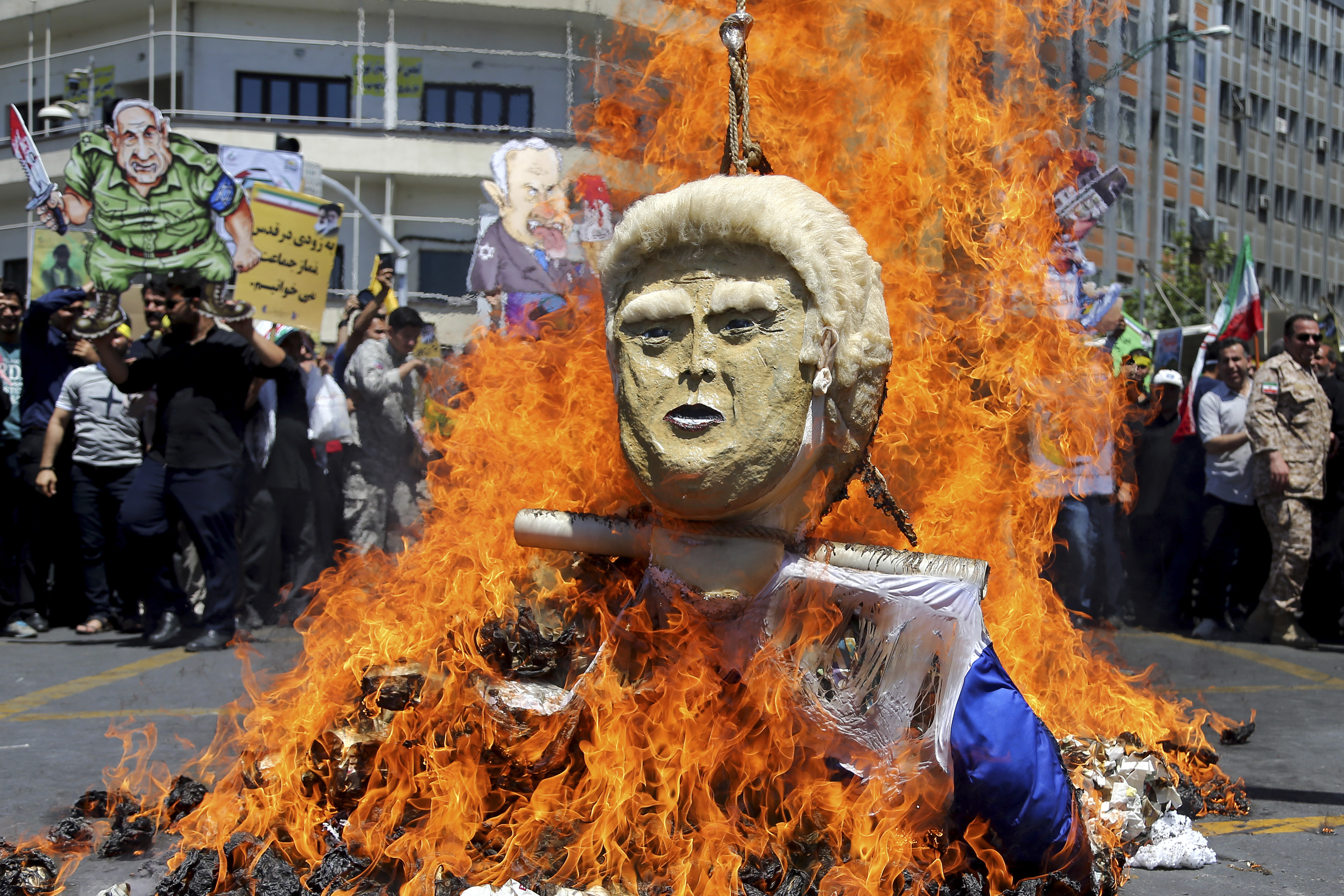
Protesters in Tehran burn effigy of US President Donald Trump at the annual Al-Quds day rally after the US pulls out of the JCPOA nuclear deal, 2018. (Credit: AP)
Protesters in Tehran burn effigy of US President Donald Trump at the annual Al-Quds day rally after the US pulls out of the JCPOA nuclear deal, 2018. (Credit: AP)
In May, Iran announces it will boost production of enriched uranium in response to the sanctions and the US withdrawing from JCPOA.
In June the US accuses Iran of attacking oil tankers in the Gulf, a claim Tehran denies.
In July a US drone is shot down by Iranian military. Tehran accuses British oil tanker of violating maritime rules and seizes vessel.
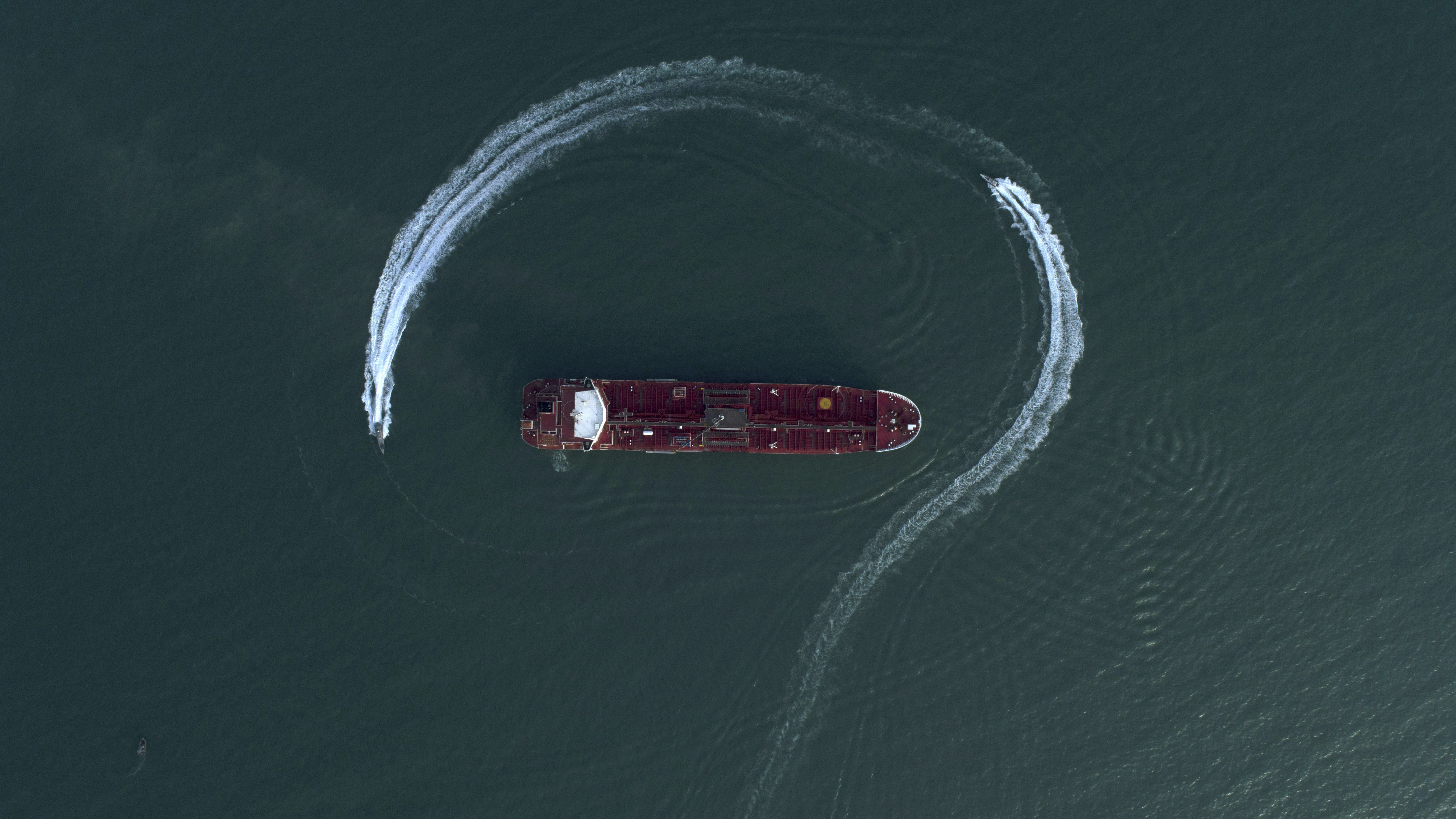
Speedboats from Iran's Revolutionary Guard circle a British oil tanker after Iran accuses the vessel of violating maritime rules, July 2019. (Credit: AP)
Speedboats from Iran's Revolutionary Guard circle a British oil tanker after Iran accuses the vessel of violating maritime rules, July 2019. (Credit: AP)
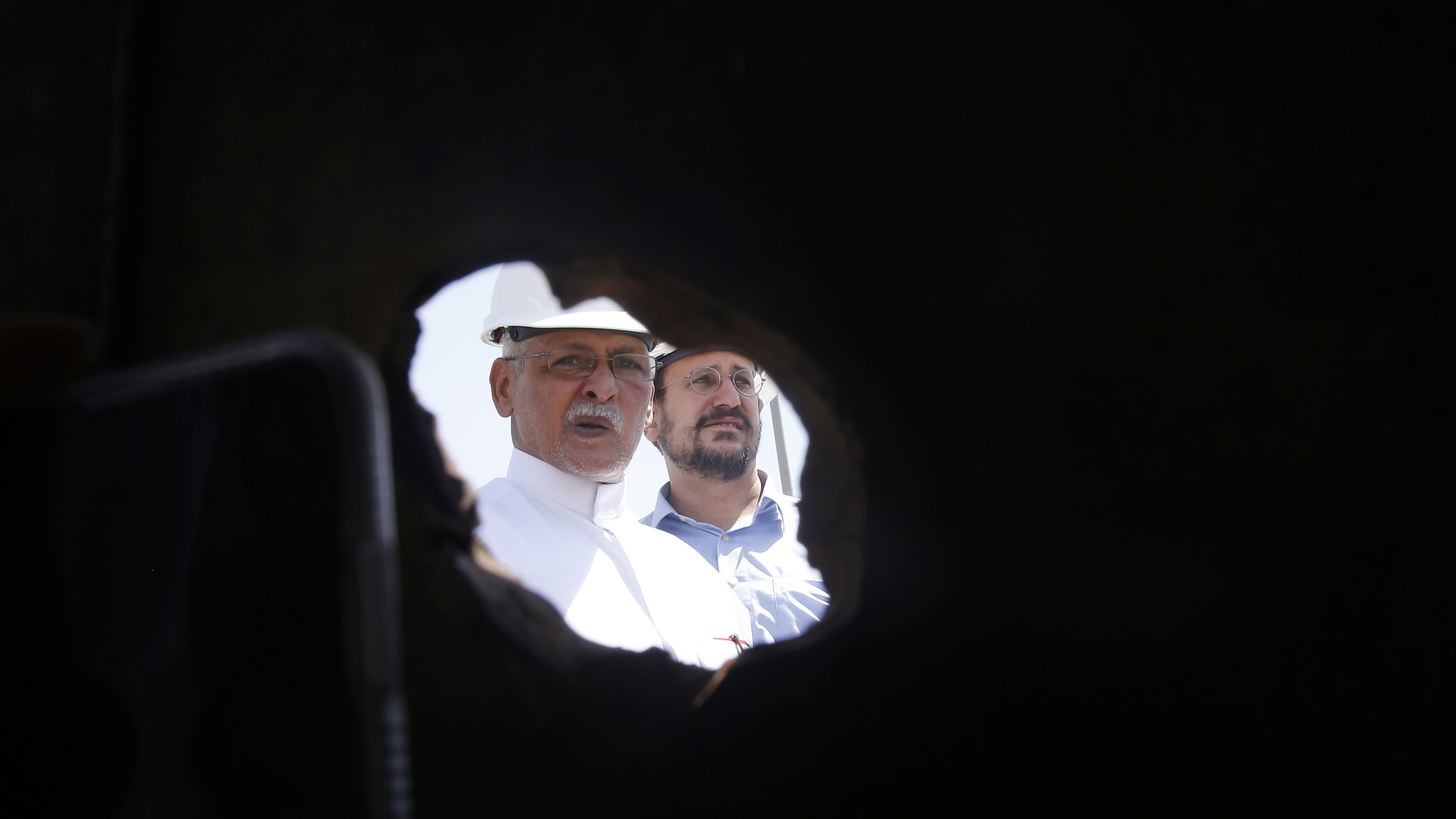
Workers at Saudi-state oil company Aramco look through a hole in a damaged pipe in the Khurais oil field after it was hit during an attack, September 2019. (Credit: AP)
Workers at Saudi-state oil company Aramco look through a hole in a damaged pipe in the Khurais oil field after it was hit during an attack, September 2019. (Credit: AP)
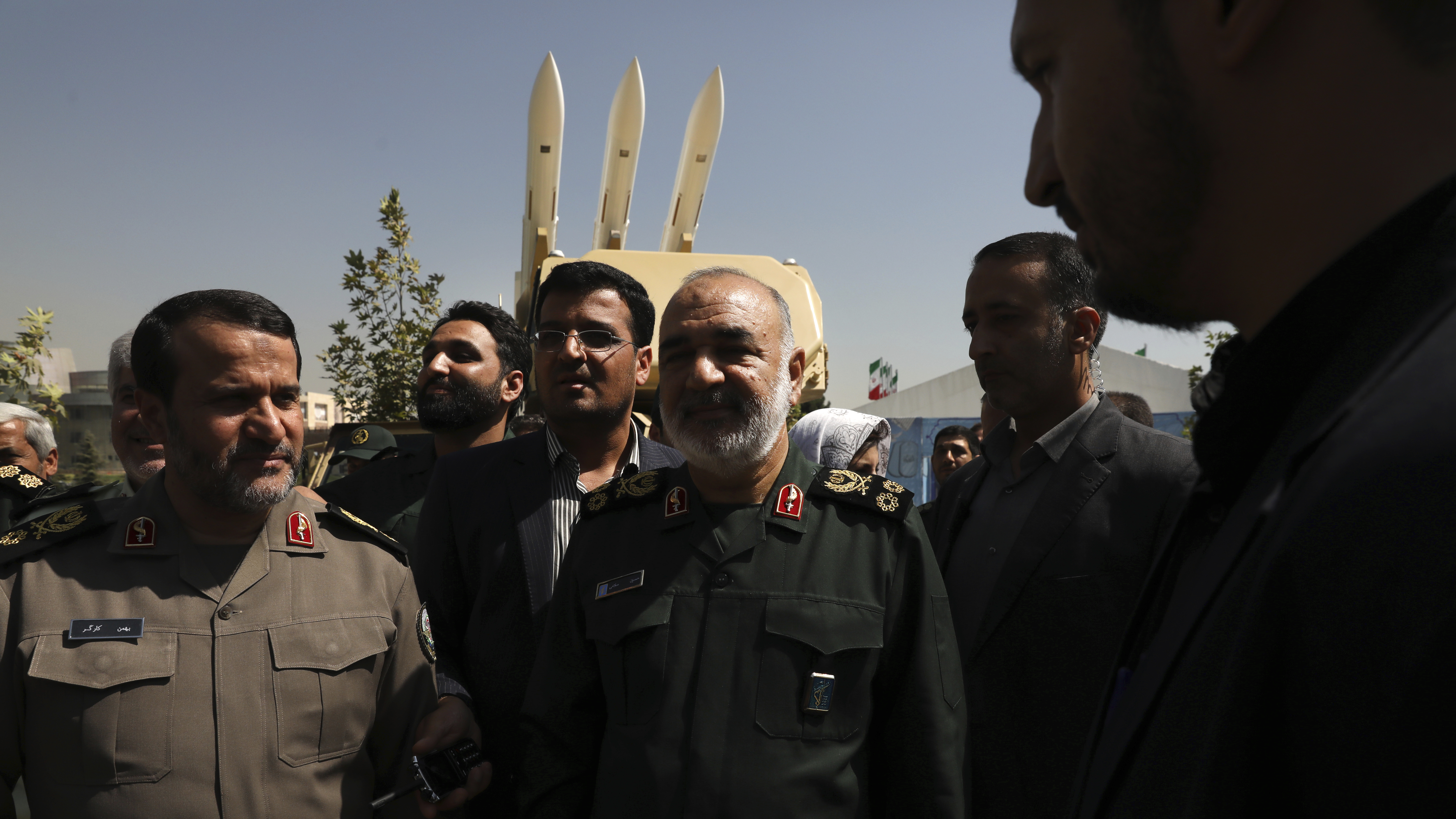
Chief of Iran's Revolutionary Guard Gen. Hossein Salami, center, visits remnants of US drone shot down by the Guard, September 2019. (Credit: AP)
Chief of Iran's Revolutionary Guard Gen. Hossein Salami, center, visits remnants of US drone shot down by the Guard, September 2019. (Credit: AP)
In September, drones and missiles attack Saudi Arabia's state-run oil company. The US, alongside many of its Western allies blame Tehran, which denies involvement.
In December, a rocket attack on US military base in Iraq kills a US citizen. Washington accuses an Iraq militia backed by Iran of carrying out the assault and fires on its bases, killing 25 combatants. Protesters rally outside the US Embassy in Baghdad, and break through outer security limits. Trump blames Iran.
In early January, Trump gives go-ahead for assassination of Qassem Soleimani on Iraqi territory.
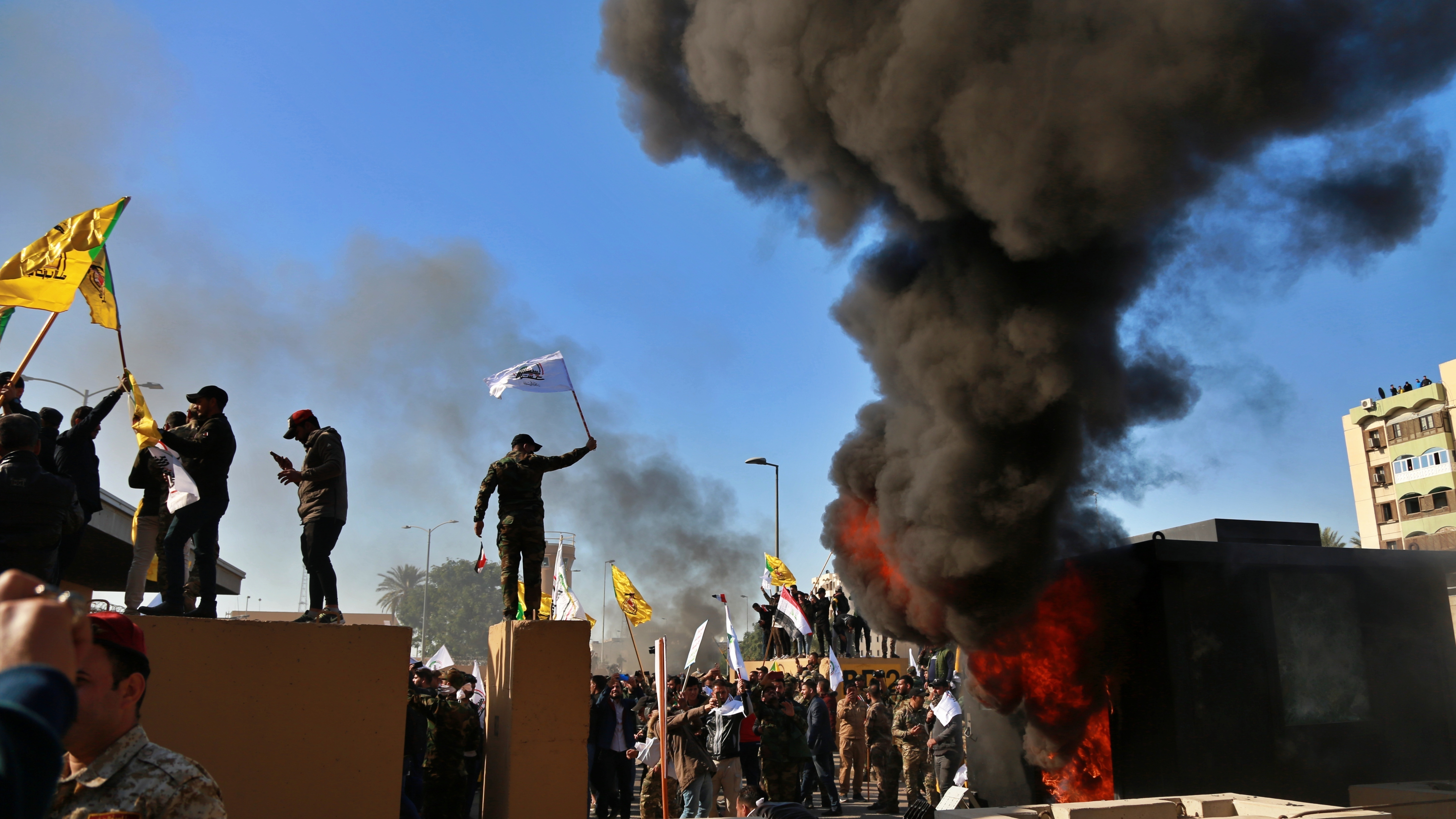
Anti-US protesters light fire at US embassy compound, December 2019 (Credit: AP)
Anti-US protesters light fire at US embassy compound, December 2019 (Credit: AP)
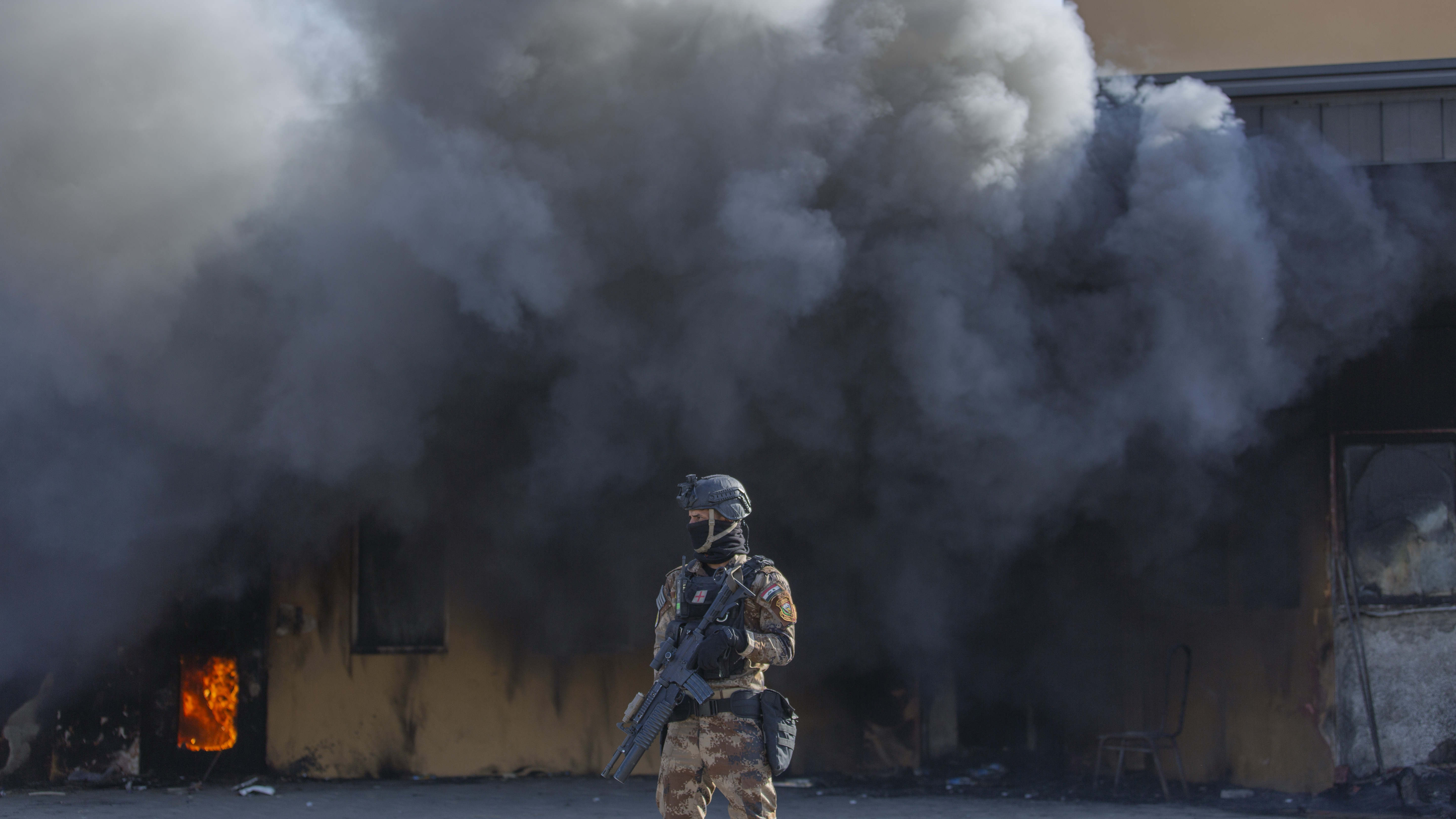
Iraqi soldier in front of smoke in the US embassy compound in Baghdad, December 2019. (Credit: AP)
Iraqi soldier in front of smoke in the US embassy compound in Baghdad, December 2019. (Credit: AP)
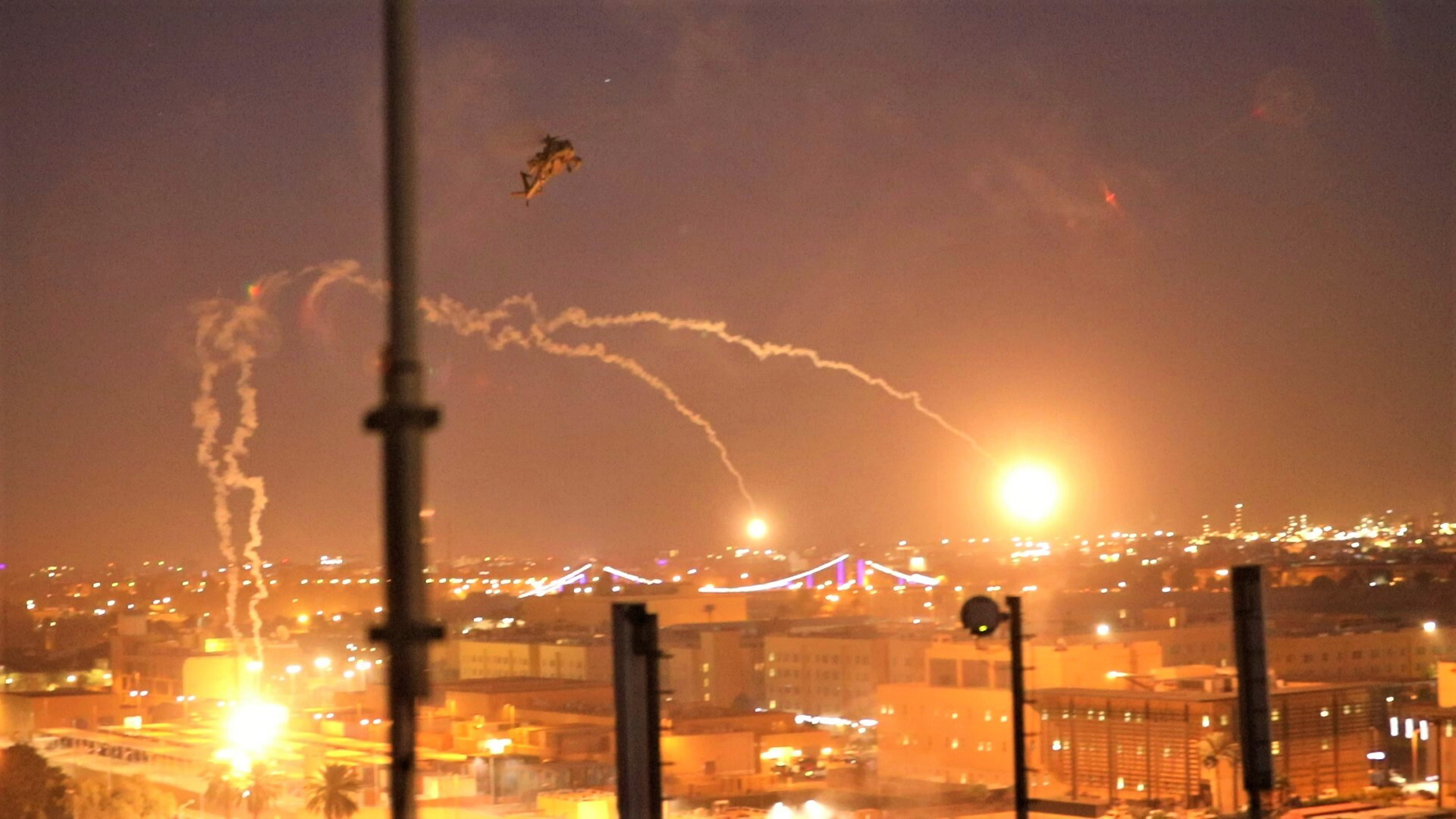
US Apache helicopters launch flares over Baghdad Green Zone as a show of presence to deter anti-US protesters, December 2019. (Credit: AP)
US Apache helicopters launch flares over Baghdad Green Zone as a show of presence to deter anti-US protesters, December 2019. (Credit: AP)
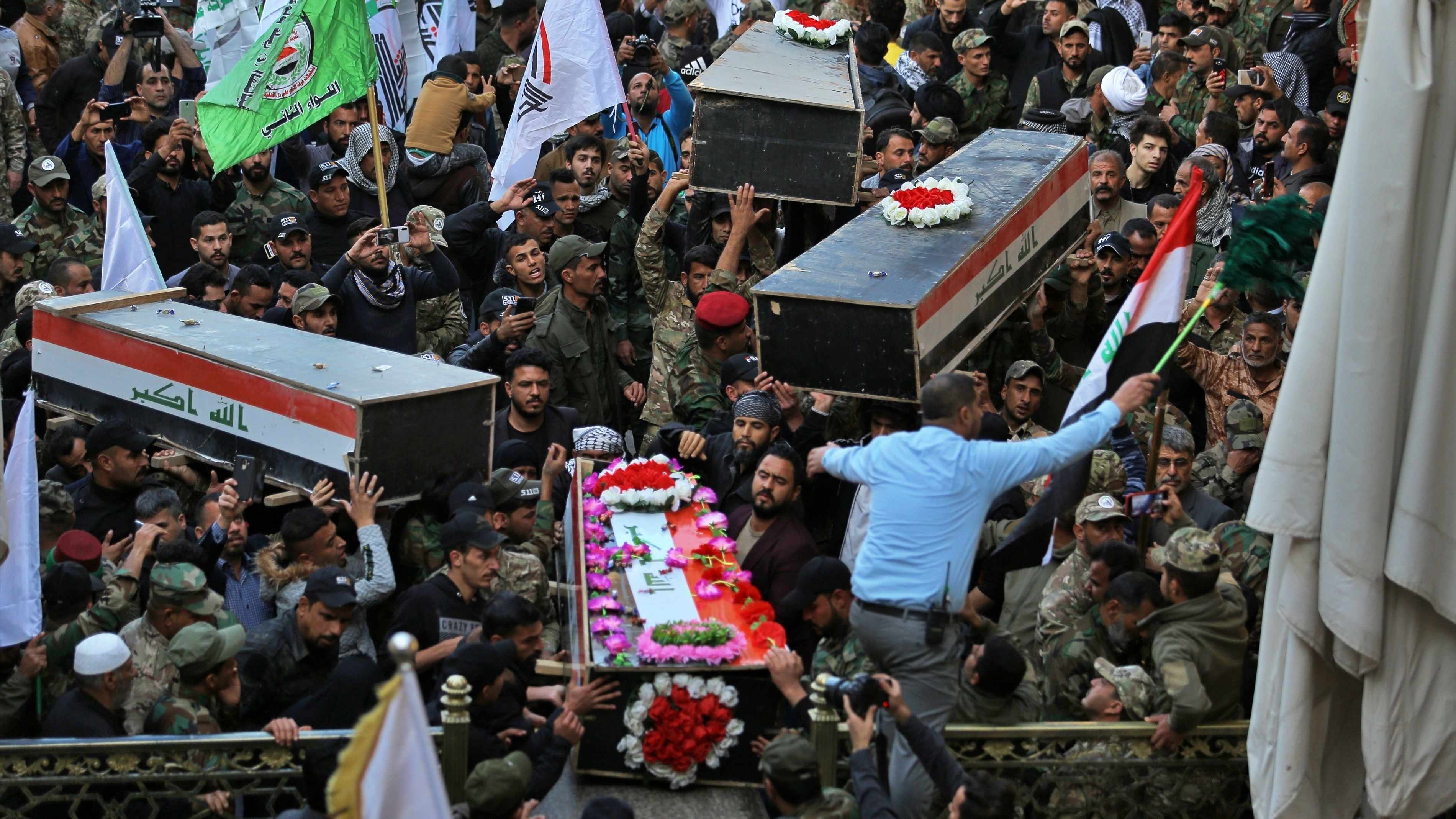
Mourners carry the coffins of Iran-backed Popular Mobilization fighters killed by US airstrike in Iraq's Qaim, December 2019. (Credit: AP)
Mourners carry the coffins of Iran-backed Popular Mobilization fighters killed by US airstrike in Iraq's Qaim, December 2019. (Credit: AP)
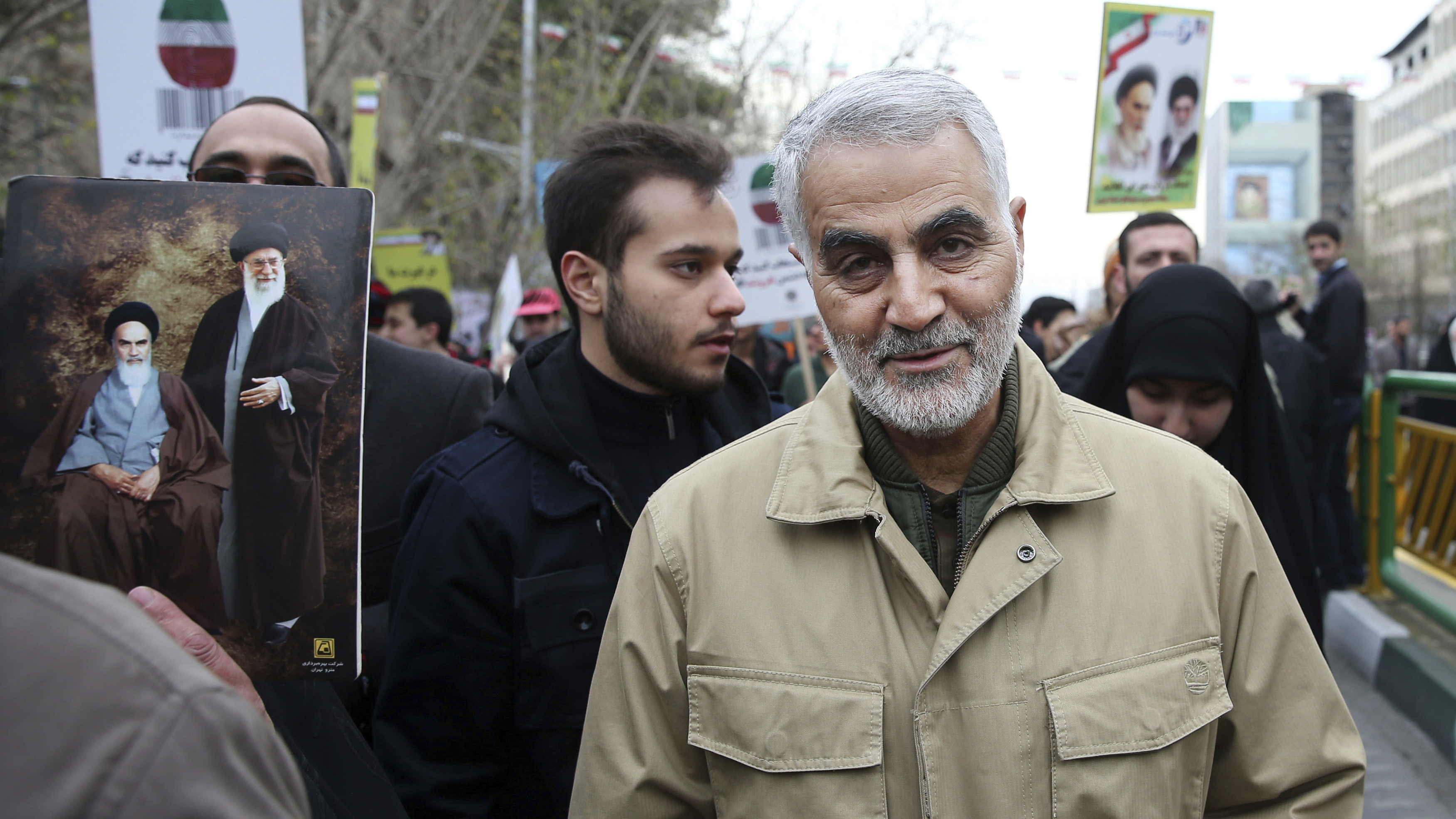
The late Revolutionary Guard General Qassem Soleimani attends an annual rally honoring the anniversary of the 1979 Islamic revolution in Tehran, 2016. (Credit: AP)
The late Revolutionary Guard General Qassem Soleimani attends an annual rally honoring the anniversary of the 1979 Islamic revolution in Tehran, 2016. (Credit: AP)
Source(s): Reuters